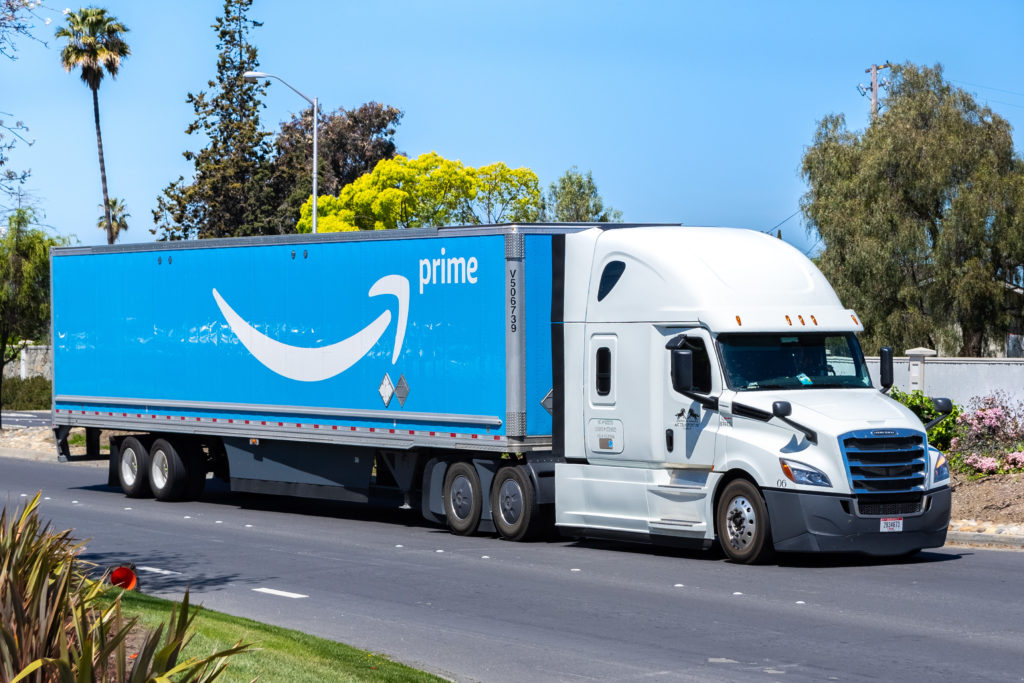
Over the years, Amazon has slowly but surely built an entire fleet of delivery and transportation vehicles to maintain its foothold on the behemoth of a business it has created. According to Business Insider, Amazon reportedly has an incredible number of vans used for the “last mile” of delivery, bringing product from the company’s warehouses to our doorsteps, with over 100,000 vans nationwide. As one could clearly understand, one company maintaining as much volume and control over the delivery of its own product certainly effects the ability for drivers to gain valuable work from a multitude of manufacturers and retailers. However, up until this point, there has been one key aspect of Amazon’s business that has allowed for drivers and the trucking industry to breath easy; the company has long welcomed third parties for shipping its product that goes beyond that “last mile.” Unfortunately, the trucking industry now may be facing a harsh reality, one that sees Amazon bringing all of its delivery resources in-house and creating a fleet that handles the entire delivery process for its business.
As we recently wrote, the trucking industry is already facing a steep drop-off of its own workforce due to retirement and an overall lack of incentives to take on the grueling job. Additionally, the industry has found it much more difficult to keep large fleets of trucks on the roads for trucking companies as retailers and manufacturers continue to consolidate and tighten their grip on shipping costs. That’s why the most recent sightings and word of Amazon’s branded Class 8 tractors are certainly cause for concern. Just last year Business Insider wrote an article on how Amazon was playing a significant role in the driver shortage. At the time of that piece being written, the online publication noted that “Amazon only operates 300 semi-trucks – FedEx, by contrast, operates more than 20,000 semi-trucks.” Additionally, in 2017 it had then been reported that the company was also reportedly attempting to bring 30,000 drivers into its company for solely its “last mile” services. Fast forward two years and we are not only seeing the driver shortage as be far more of an issue, but the trucking industry as a whole has been negatively affected. Most importantly, this is all prior to Amazon actually using the thousands of semi-trucks it has now purchased in 2019.
Amazon’s past decision to lure trucking industry drivers to its company has clearly had an impact on the industry as a whole. Unfortunately, the driver shortage is likely the least of trucking companies’ concerns at the moment. For example, in its article from 2018, Business Insider noted that the move by Amazon led some trucking companies to “primarily target the ‘spot market,’ which is for shipping agreements made only a few days before goods are shipped.” The reason for the trucking fleets to move to the spot market was primarily because this area in the market was far more lucrative than signing a third-party contract that could result in the manufacturer spending far more than is necessary over a longer period of time. At this time, the industry is suffering due to “spot market” rates crashing, not necessarily due to a driver shortage. Overall, while there have only been a few sightings of Amazon’s new tractors, the reality is that one of the world’s largest retailers is about to take the next step to maintain complete control over all of its business.
It cannot go without being said that the ramifications of Amazon bringing its delivery in-house will hinder much more than just the trucking industry. Large decisions such as these have ripple effects that will ultimately affect us all. Earlier in 2019 we wrote about how the trucking industry is losing many drivers, thus forcing older drivers to continue past retirement and potentially hiring drivers who may not actually be all that qualified or properly trained for the job. Such instances then potentially lead to older, overworked, and improperly trained drivers that are asked to drive thousands of miles across the country. Clearly there are circumstances that lead to traffic collisions and fatalities on the road, but decisions such as this, although rightfully made, certainly don’t make them any less likely to occur.
Reader Interactions